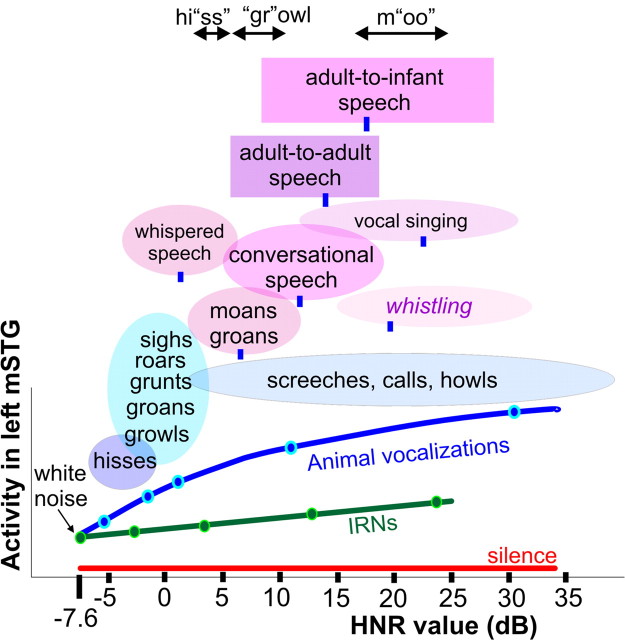Figure 6.
Typical HNR value ranges for various subcategories of vocalizations. Oval and box widths depict the minimum to maximum HNR values of the sounds we sampled, charted relative to the group-averaged HNR-sensitive response profile of the left mSTG (from Fig. 4d). Green and blue dots correspond to sound stimuli illustrated in Figure 1, a and b. Blue ovals depict subcategories of animal vocalizations explicitly tested in paradigm 4. Ovals and boxes with violet hues depict subcategories of human vocalizations (12–18 samples per category), and blue tick marks indicate the mean HNR value. For instance, conversational speech, including phrases explicitly tested in paradigm 5, had a mean of +12 dB HNR, within a range from approximately +5 to +20 dB HNR. Adult-to-adult speech (purple box; mean = +17.2 dB HNR) and adult-to-infant speech (violet box; mean = +14.0 dB HNR) produced by the same individual speakers were significantly different (t test, p < 10−5). Stressed phonemes of three spoken onomatopoetic words depicting different classes of vocalizations are also indicated. Refer to Materials and Methods for other details.

